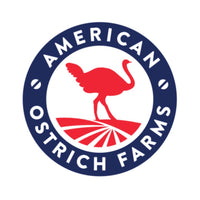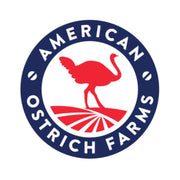SHOULD I STOP EATING MEAT? THE ENVIRONMENTAL IMPACT OF MEAT PRODUCTION
Consumers don’t have to give up meat entirely to save the planet or their health. Eating a balanced diet, consuming a variety of meats — including more sustainable red meats like ostrich meat — and knowing how different foods are produced can help.
While beef production is usually the main focus because the industry is so large, all types of meats have differentiated and measurable impacts on the environment.
WHAT MAKES MEAT BAD FOR THE ENVIRONMENT
The meat industry has its flaws — and more specifically, the meat production process. Let’s take a closer look at how the meat production process can leave a negative environmental impact.
GLOBAL MEAT CONSUMPTION IS RISING
With the demand for all proteins on the rise, the meat industry must do more to supply enough product to meet the massive growth of consumer demand. 350 million tons of meat are consumed globally each year, a figure that has doubled in the past 30 years and is expected to grow to 570 million tons by 2050.
This datasource also states that in order to meaningfully mitigate environmental harm and climate change, western meat consumption needs to fall by 90%! Consumers are loath to give up their red meat, but major improvements can be made simply by decreasing the consumption of particularly resource-intensive varieties of meat — and instead consuming more sustainable meats that require fewer resources to produce, like ostrich.
CONVENTIONAL LIVESTOCK PRODUCTION IS A MAJOR POLLUTER
Along with the massive numbers of livestock needed to fulfill these demands comes a LOT of pollution. Animal waste such as manure and urine emit around 400 different harmful gasses into the atmosphere. These gasses include:
- Ammonia;
- Endotoxins;
- Hydrogen sulfide;
- Methane;
- Nitrous oxide; and
- Particulate matter.
The abundance of harmful substances being emitted by animal waste is polluting our environment to devastating effect. In fact, just the waste from livestock alone is estimated to make up about 14.5% of all global greenhouse gas emissions.
There were an estimated 369 million tons of animal waste produced from livestock and poultry on the largest concentrated animal feeding operations (CAFOs) in 2012. What consumers may not realize is how these large amounts of animal waste are disposed of - in animal waste pits and lagoons.
Lagoons are filled with animal excrement, residue leftover from antibiotics, bedding waste, cleaning solutions, deceased animals, and various other chemicals — all of which can spill and leak into the ground.
MEAT PRODUCTION REQUIRES SIGNIFICANT LAND AND WATER
Compared to plant-based foods, meat is an inefficient food source that requires a lot of energy, water, and land to produce. Mass-production of meat products generates huge amounts of greenhouse gases that are emitted into the atmosphere.
It takes an estimated 2,300 trillion tons of water to produce all the meat consumed each year. To put this into perspective, this same source states that “The amount of water used for meat production in just 35 hours could provide drinking water for everyone on earth for a year.”
WHAT MAKES MEAT GOOD FOR THE ENVIRONMENT
There are mitigants to the harm caused by meat production. For instance, consumers can be more conscientious of what types of meat they eat and know more about where their meat comes from. And, of course, reducing the amount of meat consumed will help too.
While the negative outcomes of meat production listed above may seem off-putting, it is important to keep in mind that there are benefits associated with livestock and animal products as well.
The livestock and poultry industries are a critical part of the global economy. For instance, animal agriculture makes huge contributions to the economy by providing the following:
- About $346 billion in economic output;
- An estimated 1.85 million jobs;
- Around $60 billion in household income.
Advantages of having a livestock farm include:
- Having the ability to bring your community together;
- Having control over every aspect of the animal products you produce and eat;
- Helping to develop valuable skills;
- Protecting the planet by farming and producing in a sustainable way;
- Reducing waste, pests, and disease on your farm;
- Reducing the burden on commercial enterprises; and
- Helping to boost your local economy.
SUSTAINABLE LIVESTOCK PRODUCTION METHODS
Sustainable production methods are the future of the agriculture industry. Farmers are showing more interest in the well-being of their animals by prioritizing more virtuous ways to manage their livestock, such as the use of pastures.
Pasture-based livestock farming “reintegrates the cycle, putting livestock on grass or in another natural environment (hogs are often raised in the woods and beef cattle can graze on marginal rangelands), where they can roam freely, eat the plants or insects they naturally digest, and improve the fertility of the soil with their manure.” Instead of being in a concentrated animal production facility where animal waste is problem to be mitigated, farmers can instead utilize pasture and rotational grazing where their waste, more specifically manure, is reused as a beneficial fertilizer.
Another way to practice sustainable production methods is to invest in animals that produce more than just meat, such as poultry for eggs and ostriches for high-quality body oils and pet foods. This way, no part of the animal is wasted and the negative environmental impact of the products produced becomes much lower.
MAKING NON-ARABLE LAND PRODUCTIVE
Some individuals may feel that allowing animals to graze is reducing the chance to plant more crops while increasing the opportunities for livestock to cause more damage than good. However, this isn’t often the case.
In fact, some plant life even relies on animal grazing for survival. According to an article published on Sustainable Food Trust, this is because “many important plant and wildlife species have evolved in tandem with grazing animals and depend on them for their survival…”
Not all land that is used for livestock pastures can be planted for food production; grassland, in some locations, can only be used for food production through pastures and livestock.
CONTINUOUS CROP PRODUCTION IS NOT SUSTAINABLE
Switching to a vegan lifestyle and choosing “meatless meat” alternatives rather than animal meat isn’t automatically sustainable in the way some may think. Although vegan and vegetarian diets do tend to have a much smaller environmental footprint, conventional modern agriculture — sometimes called industrial agriculture — is not sustainable, even for producing an all-plant diet.
There are many effects of long-term continuous crop production. For example, continuous cropping can lead to “degradation of both soil organic matter and hence soil structure.” It can also decrease the number of beneficial microorganisms such as mycorrhizae and plant-growth-promoting rhizobacteria.
A few of the numerous other issues that come along with continuous crop production include:
- Deforestation;
- Irrigation issues (i.e. over-irrigation and water pollution);
- Pollution and runoff problems related to crop fertilizer and pesticides;
- Soil exhaustion; and
- Waste from tools used to help maintain the crops (i.e. plastic mulch).
While consuming less meat and more plants can have an immediate beneficial impact on your overall personal environmental footprint, the truth is that smaller-scale agriculture and more responsible crop and land management are necessary to make food production truly sustainable. Just as different meats can be raised more or less responsibly and sustainably, so too can different plants and farming techniques be adopted to make the food supply more environmentally sustainable.
FINDING A RESPONSIBLE BALANCE IN YOUR DIET
A balanced diet is one of the key components of living a healthy, sustainable lifestyle. While cutting out meat entirely is not necessary, it is important to reduce meat consumption — just as it is to be wary of the amount and type of vegetation you consume as well. Each has its own problems in terms of sustainable production.
When shopping for meat, pay attention to where your meat comes from, how it was raised, and the way it was processed. If sustainability is a priority, then choosing a meat vendor who takes pride in the way their animals are raised, practices zero-waste pasture farming, and is transparent with their processes, is the way to go. Quitting meat won’t save the planet, but smarter production of plants and animal products can.






